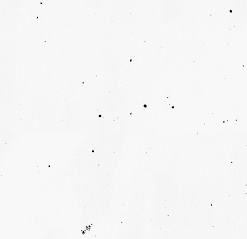Cassiopeia

![[de]](../../Logos/flag_ger.gif)
![[it]](../../Logos/flag_it.gif)

Particulars:
General:
This beautiful constellation at the edge of the Milky Way has definetely the
shape of a "W". It is assiociated with the Perseus
constellation family.
Sweeping this region with binoculars (or even an opera glas) is rewarding
(especially the region around delta Cas).
It is located between DECL=+50 and DECL=+60, RA=23h and RA=3h. Once you found
Cassiopeia or the Big Dipper, which is located opposite of the celestial pole,
you can easily locate other
constellations of the northern hemisphere.
In arabian countries this constellation is called Caph, which
is also the name of beta Cas.
Stars and other objects
The leading star, alpha Cas, also called Shedir (arab.:
the breast), is an irregular variable star (K0IIIa), which forms with an 9th
mag blue neighbour an optical double star (i.e. not physically related).
Gamma Cas, sometimes called Tsi (chin.: the whip), is
an unstable blue subgiant (spectraltype B0IVe), that throws off shells of gas
at unpredictable intervals. So it brightness vary between 2nd mag and 3rd mag.
The double eta Cas consists of a yellow (G0V) and a red component (M0)
and is really beautiful in small telescopes. The two stars are of 3.44 mag and
8th mag, respectively.
A nice triple star is iota Cas. In small telescopes a 8th mag companion
to the white star of 4.5 mag is revealed. The brighter component has a close
7th mag companion, but for separation a telescope with an apertur of at least
100 mm and as high magnification is needed.
Another variable star is rho Cas. This yellow star can be viewed with
the naked eye. Its variation period is unknown. (?)
In this region one can find lots of nebulae and open clusters:
The diffuse nebula I 59, lying next to gamma Cas consists of two
fans pointing northwest.
One degree west of alpha Cas you find the diffuse nebula NGC
281.
The planetary nebula NGC 7635shows up an high total brightness; yet it
appears faint due to its large extension. A nice object even for small
telescopes.
Of the hole bunch of open clusters the two Messier objects
M52 and M103
may be best known. The first is somewhat kidney-shaped and contains over 100
stars. Its a good object for binoculars showing a prominent 8th mag star at
one edge. The second Messier object has the shape of a fan and at least 40
members (for more information about both objects please refer to the Messier
Database).
From the other clusters NGC 457 should be mentioned for it is one of the
brightest in the sky and an attractive object for small telescopes; its stars
seemed to be arranged in chains. Also good viewable it the 5th mag yellow
supergiant phi Cas (spectraltype F0Ia).
Mythological Background:
Long ago in ethiopia Cassiopeia has been the wife of
Cepheus and the mother of
Andromeda. Because she thought
herself more beautiful than the daughters of Nereus, a god of the sea, she
challanged the anger of the god Poseidon. To punish her, her daughter was
chained to a rock of the coast as a sacrifice for a sea monster. Andromeda was
saved from death by Perseus.
(Publius Ovidius Naso: Metamophoses, IV)
To learn humility Cassiopeia was banned to the sky hanging half of the time
head downward.
![[Constellations]](../../Logos/constS_s.gif)
![[Home]](../../Logos/maa_s.gif)